by James Scott Bell
@jamesscottbell
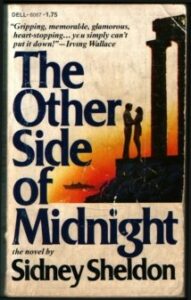 Before there was James Patterson there was Sidney Sheldon.
Before there was James Patterson there was Sidney Sheldon.
His second novel, The Other Side of Midnight (1973) was a monster bestseller. A string of #1 NYT bestsellers followed. Sheldon sold an estimated 400 million books before he died.
And he didn’t start writing fiction until he was in his early 50s!
Before that Sidney Sheldon led, if you’ll pardon the expression, a storied life.
He was born in Chicago in 1917, to Russian-Jewish parents. He almost committed suicide at age 17 (it wasn’t until decades later that he was diagnosed as bipolar). What pulled him back from the brink was writing. He pursued it with passion, and the results were astounding.
He had two hit shows on Broadway at the age of twenty-seven.
After World War II, he became a studio writer in Hollywood. His screenplay for the Cary Grant comedy The Bachelor and the Bobby-Soxer won the Academy Award for best screenplay of 1947. Sheldon was 30 years old.
Not that all this was a smooth trajectory toward the top. Far from it. Sheldon suffered as many setbacks as he had triumphs. He described the writer’s life (especially in Hollywood) as being on an elevator. Sometimes it’s up. Sometimes it’d down. And if it stays down, you need to get off.
Sheldon continued to ride that elevator in the 1950s. Up and down. He even had a great idea for a Broadway show ripped off from him.
In the early 60s he decided to take a crack at television. He created the hit series The Patty Duke Show, and get this: Sidney Sheldon himself wrote virtually every episode himself. Over 100 in all!
Do you know how absolutely amazing that is? To be that sharp and funny week after week? And all this while suffering from what at the time was called manic-depression.
But even more amazing was the personal strength and courage he and his wife showed through two highly emotional tragedies.
They had a baby girl born with spina bifida and, despite all the best medical care, she died in infancy. After a long period of mourning they decided to adopt a child. An unwed mother whose boyfriend had left her gave the baby up. They brought her home and for six months loved her and bonded with her.
But under California law at that time, the biological mother could change her mind within six months. This mother did, and one day the authorities came and took the Sheldon’s baby daughter away.
Sheldon and his wife turned to religion for solace. Sidney (now being treated with Lithium) continued to work. He started developing a new television show from an idea he’d had for a long time. It was about an astronaut who finds a bottle on the beach and frees a genie. But this genie would not be the big, lumbering, male giant of tradition. Oh no. This one would be a babe. That’s how I Dream of Jeannie was born.
During this time, the 1960s, Sheldon kept noodling on a thriller idea about a psychiatrist who is marked for murder though he has no enemies. He must use his professional skill to figure out who is stalking him. That became Sheldon’s first novel, The Naked Face. It was published in 1970 and won the Edgar Award from the Mystery Writers of America.
Sheldon caught the novel-writing bug, big time. Here he could create whatever world he wanted, without regard to budgets, sets, actors, or restrictions of any kind—especially the story-by-committee nonsense of Hollywood.
He had an unsold screenplay in his drawer and turned it into The Other Side of Midnight. Sheldon was 56 when this novel rocketed him into the literary stratosphere.
His last thriller, Are You Afraid of the Dark, was published in 2004, when Sheldon was 87.
Sidney Sheldon is the only writer ever to have won a Tony, an Oscar, and an Edgar Award. Let’s see if anybody ever does that again!
In The Writer’s Handbook 1989, Sheldon talked about his method. Here’s some of what he said.
The Secret
Sheldon was asked, What are some of the devices you have found most successful in getting your readers to ask breathlessly, “What’s next?”
The secret is simple: Take a group of interesting characters and put them in harrowing situations. I try to end each chapter with a cliffhanger, so that the reader must turn just one more page to find out what happens next. Another thing I do is to cut out everything that is extraneous to the story I am telling.
Simple to understand, yes. To put into practice book after book, well, that’s something else again. But you can learn how to write more interesting characters, how to make a form of death (physical, professional, psychological) hang over every scene (“harrowing situations”), and ways to end a scene or chapter with what I call a “Read On Prompt.” This is all to be filed under Craft Study.
Process
Sheldon was a “discovery writer” or “pantser.” But let’s hear what that actually meant.
When he began a book, all he had in mind was a character. He then dictated to his secretary, developing the character, bringing others in, letting them interact. “I have no idea where the story is going to lead me.”
But that is only for the first draft. Then came the work.
The first rewrite will be very extensive. I will discard a hundred or two hundred pages at a time, tightening the book and clarifying the characters.
A hundred to two hundred pages? Yikes! There’s more: “I usually do up to a dozen rewrites of a manuscript.” Yikes and gulp!
He would spend a year or year-and-a-half rewriting and polishing a book. This paid off, of course. Big time.
He did have a caveat:
I want to emphasize that I do not recommend this way of working for any but the most experienced writers, since writing without an outline can lead to a lot of blind alleys. For a beginning writer, I think an outline is very important…It is a good idea to have a road map to tell you where you are going.
The Leave-Off Trick
Like Hemingway, Sheldon would end his day’s work after beginning a new scene. Sometimes he’d quit mid-sentence. “In the morning, when you are ready to go to work, you have already begun the new scene.”
Also, he would begin his writing sessions by lightly going over the previous day’s work.
The Mid-Plot Blues
Sheldon said he usually wanted to give up in the middle of his novels. I experienced this early in my career and came to call it the 30k Brick Wall. I found that several successful writers reported the same thing.
Why should this be? Maybe because by 30k you’ve got the engine revved up and are now staring at that long middle, wondering if you’ve got the right foundation and enough plot to make it to the end. The writing willies, if you will.
Formerly, my solution was simply to take a day to brood and imagine and jot notes, maybe adding a new character or two. Then, once I started up again, one scene at a time, I would get back into the flow. That works.
Now I find that if I have my signpost scenes in place, especially the mirror moment, I don’t hit the wall anymore.
The Emotion Quotient
You get your readers emotionally involved in your characters by being emotionally involved yourself. Your characters must come alive for you. When you are writing about them, you have to feel all the emotions they are going through—hunger, pain, joy, despair. If you suffer along with them and care what happens to them, so will the reader.
Wise words with which we all should agree.
Minor Characters
I refer to minor characters as “spice.” They are an opportunity to delight readers, so don’t waste them by making them clichés.
Sheldon:
Every character should be as distinctive and colorful as possible. Make that character physically unusual, or give him an exotic background or philosophy. The reader should remember the minor characters as well as the protagonists.
I’ll close by recommending Sheldon’s memoir The Other Side of Me. I love reading bios of authors. This one is entertaining, instructive, and inspirational.
What do you think of Mr. Sheldon’s advice?


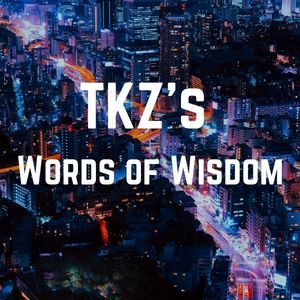
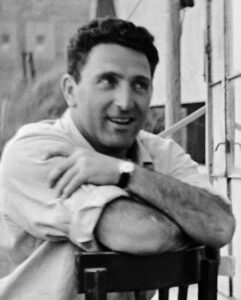




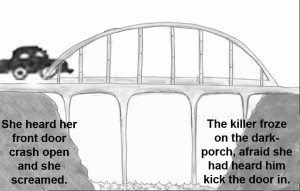




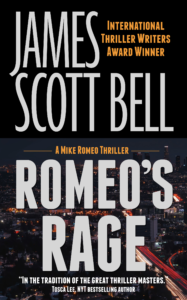
 What was a time when a seemingly random event or conversation changed your life, or way of thinking, in a significant way?
What was a time when a seemingly random event or conversation changed your life, or way of thinking, in a significant way?